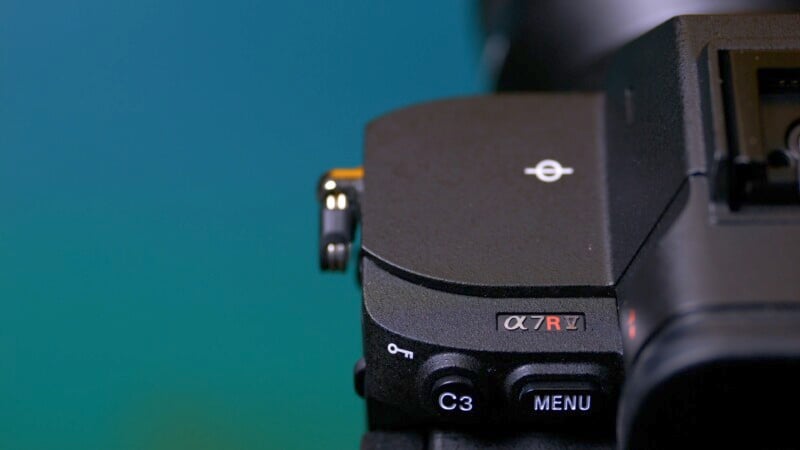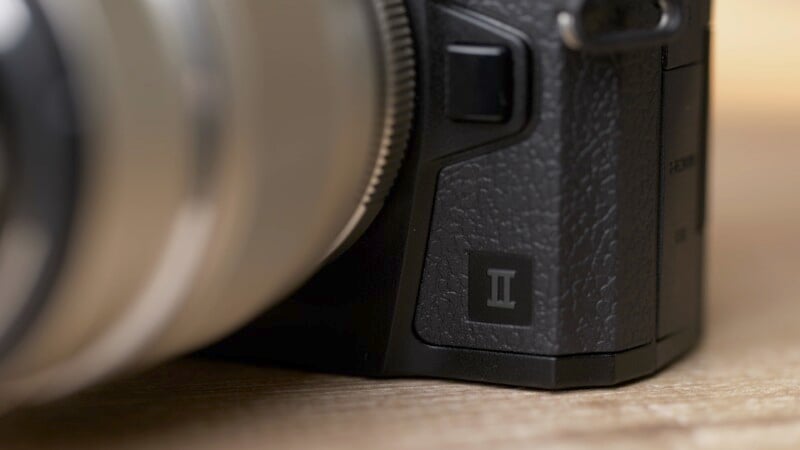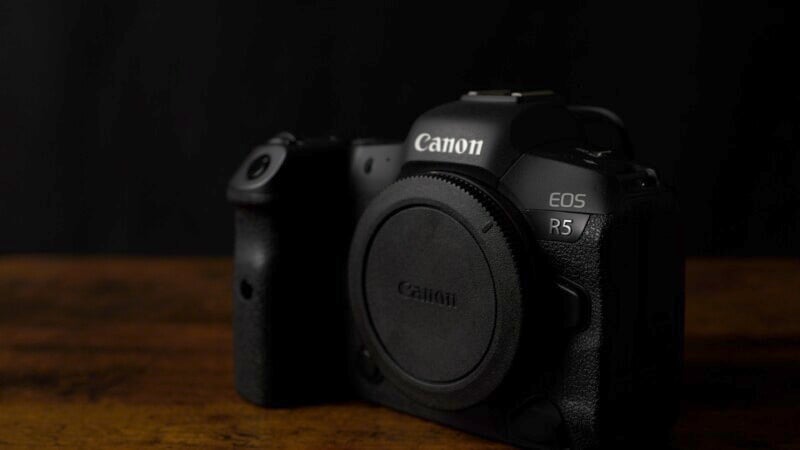There is a recurring theme that sneaks its way into the comments section of the YouTube channel. We’ve heard this same statement on The PetaPixel Podcast many times as well and it goes a little something like this: “Why do I have to pay for the video features on a camera when I just take photos?”
I’m gonna be perfectly honest and state that my initial reaction is to “poo-poo” the statement. After all, I like to shoot video and stills, so I want as many hybrid photo/video features as possible. Why would anyone prefer to lose some video capabilities if they don’t have to? Well, after thinking about it more, these folks might have a point.
We decided to pick one camera from each major brand that specifically eschews the use of video or at least makes no compromises to photographic image quality. Then we can revisit the argument of photo over video and see if it holds any merit.
At a Glance
Fujifilm X-T5
When Fujifilm released its 40-megapixel APS-C sensor, it made the X-H2 which was a full-featured video and stills hybrid system. Fujifilm recognized that some users wanted the same resolution but in a camera aimed toward the still photographer.

Enter the X-T5, a more affordable camera with the retro-inspired controls that Fujifilm is famous for and a reliable autofocusing system as well. Make no mistake, the X-T5 shoots excellent video but the emphasis was clearly towards pleasing the stills photographer and it made the camera wildly popular. The X-T50 is also a good option for someone who is more interested in the photographic experience and wants to keep the costs down even more.
Leica M11-D
Not only does the Leica M11-D not shoot video, but it doesn’t even have an LCD screen. This 60-megapixel rangefinder provides the purest kind of photographic experience while still taking digital images. No point in having video features in a camera that doesn’t have a screen.

In fact, Leica rarely put video capabilities into its M series rangefinder cameras. The M240 dabbled in the video arena and promptly wrecked it for the rest of the cameras. There hasn’t been video in an M series since. If you want a truly stills-based experience that feels as close to shooting analog as you can get without actually shooting film, the M11-D is the one for you.
Sony A7RV
Sony is a huge fan of the versatility that comes with a camera that shoots both video and stills. Thus, all the current Sony mirrorless cameras are capable video cameras, however, the Sony a7R V — which is a personal favorite of mine — is the camera most aimed at the creator who values photography above all else.

The 60-megapixel sensor is excellent for big prints and gives you lots of room to crop. It has a fairly slow readout speed as a result though, so it’s not great for video with rolling-shutter being a real problem. Also, the higher-quality video modes require heavy crops and subsampling to accommodate all those extra pixels. This makes for fairly soft-looking video and a loss of wide-angle coverage.
The Sony a7R V also has a unique LCD panel articulation which can be set to tilt only which photographers love. If you want an ideal Sony camera for photography this is my recommended choice.
OM System OM-1 Mark II
Olympus cameras were never known for being particularly excellent video platforms. Frankly, when OM System spun off from the Olympus brand, it didn’t make any major improvements to video either and this leaves the system with video quality that lags behind the competition.

What the OM System cameras do very well though is create compact and incredibly robust body designs that excel at outdoor adventure and wildlife photography. The OM-1 Mark II has reliable autofocus and plenty of customization and control. I still use OM System cameras primarily for my fly fishing work because they are so good in rugged, outdoor situations.
Hasselblad X2D
The Hasselblad X2D is a camera clearly designed for photography because it doesn’t have any video features whatsoever. With its 100-megapixel sensor and top-quality glass, it can deliver the resolution and dynamic range to please the most discerning photographer.

Hasselblad toyed with video features on its X1D camera and the world erupted in protest. Hence, the X2D foregoes video which is probably a good thing because higher megapixel sensors aren’t ideal for video. What the larger sensor is good for is raw image quality, and coupled with the compact nature of the X2D, you have an ideal travel landscape camera.
Nikon Z7 II
Nikon has made huge efforts to up its video game by creating excellent hybrid cameras like the Z8, Z9, and especially the latest Z6 III. Then it went ahead and acquired the Red Cinema camera brand and it is now incorporating those LUTs to make its video offering even better.
This is terrible news for the strictly stills creator but there is still hope. The Z7 II has not yet been updated into a video hybrid and it features a non-stacked 45-megapixel full-frame sensor that provides the most dynamic range of any camera in Nikon’s Z line.

Many cameras are now incorporating stacked sensors which give big benefits for both video and sports/action photography. However, the compromises to get that extra speed often hurts dynamic range. This fact alone makes the Z7 II ideal for the Nikon user who doesn’t need the latest and greatest when it comes to video.
Canon EOS R5
The original R5 stands out as a venerable but very capable stills camera. With its non-stacked 45-megapixel sensor, it avoids the loss of dynamic range associated with the newer stacked sensors and keeps the cost down as well. The R5 has excellent ergonomics and an ideal balance between a comfortable grip and portable size for travel.

Although you can shoot decent video on the R5, the video mode is quite tricky to locate at first due to an obtuse user interface and the new R5 II shoots better quality video anyway. As long as you don’t need the latest autofocus capabilities available in that new model, the original R5 makes for an excellent stills camera choice.
Pentax K1 II
The K1 II is the only DSLR on our list but it is still one of my favorite cameras for outdoor landscape pictures. The body is rugged and strong, and the 36-megapixel sensor delivers excellent dynamic range. The even older K1 takes slightly sharper images but the K1 II is the current model and regardless, the quality is beautiful.

You can happily ignore the video mode on the K1 II because it is limited to 1080p and is largely an afterthought on this camera. I love the back panel design which is ideal for photography but not so much for video applications. There will be no selfie vlogging with this camera.
Panasonic S1R
Panasonic, more than any other company, has pushed its line of cameras in a video-centric direction. It makes arguably the best video hybrid cameras on the market and to my chagrin, has catered to photographers less and less.
Make no mistake though, Panasonic cameras can take fantastic photos and there is one model in particular that gives photographers an advantage. The S1R is the oldest mirrorless camera on this list but you can still buy it new. It has a good body design with a powerful 47-megapixel sensor at its heart. This sensor will still give the best combination of dynamic range and detail out of all the Panasonic bodies. The rear panel does not fully articulate which many photographers prefer.

Unfortunately, this camera shows its age despite the high image quality it can produce. It does not have any of the modern features like hybrid phase detection autofocus that make the newer Panasonic cameras so capable. I really hope that Panasonic makes a camera that is more dedicated to what photographers value when they do finally update the S1R.
Perhaps You Purists Were Right
Look, I’ll be the first to admit that I really prefer a camera that can do both video and stills. I also don’t think that getting rid of video features is practical or desirable. However, I do see that with current camera technology the way it is, there is a dichotomy between the world of video and stills.
I’ve come to realize that desiring a camera that is made for a more singular purpose and which has some benefits for photography at the expense of some video performance is totally valid. As we’ve seen, these cameras do exist but they generally have relatively high megapixel sensors and tend to be older models.
Larger sensors that are non-stacked in design with higher megapixel counts are great for photography while at the same time are less ideal for video. Higher megapixels mean throwing away more of those pixels to facilitate common video resolutions and this leads to softness in the recordings. Higher megapixel sensors also tend to have slow readout speeds if they are not stacked designs and this causes rolling shutter issues which affects video shooting in a big way. However, mechanical shutter usage when taking photographs makes rolling shutter a non-issue even if the sensor does read out slowly. It does beg the question though of how long manufacturers will continue to use these more traditional sensors.
Stacked sensors on the other hand are all the rage right now and they have huge benefits for both video and action photography, but they do give up some dynamic range, and I can see why some customers would prefer cameras with “older” sensors. Technology that is ideal for photography is often less than ideal for videography — and vice-versa. Maybe there is something to be said for requesting products that are more suited for stills and less so for videography. Unfortunately, that also seems to come with a cost.
It turns out that most of the cameras on our list tend to be more expensive. Higher megapixels cost more money and prestigious cameras cost even more than that. I think it’s also important to point out that not all photographers need or even desire really high numbers of megapixels, but that seems to be what you’re left with as your option. I don’t want to convey the message that only the more niche cameras above are suited for photography. But if you want a more affordable camera with more reasonable levels of resolution it will by default be designed to appeal to a more substantial pool of potential buyers and the manufacturers will undoubtedly endeavor to make those cameras as versatile as possible. That means you are going to get a camera with at least a fair level of emphasis being placed on video performance.
Truthfully, the video features of a camera have to be there regardless because every modern digital camera outputs a video signal to the LCD panel and EVF. The idea is that you might as well have the option to record that feed. Even the Leica M11-D is pulling a video signal off of the sensor in case someone wants to put the Visoflex EVF on it. It’s for this very reason that it won’t cost any less money to the consumer to simply ignore the video aspects of a camera. It makes sense to offer both high-quality stills and video features from a purely practical perspective unless the camera is designed to be very niche or very specialized. As we’ve seen now though, that tends to also mean very expensive.
